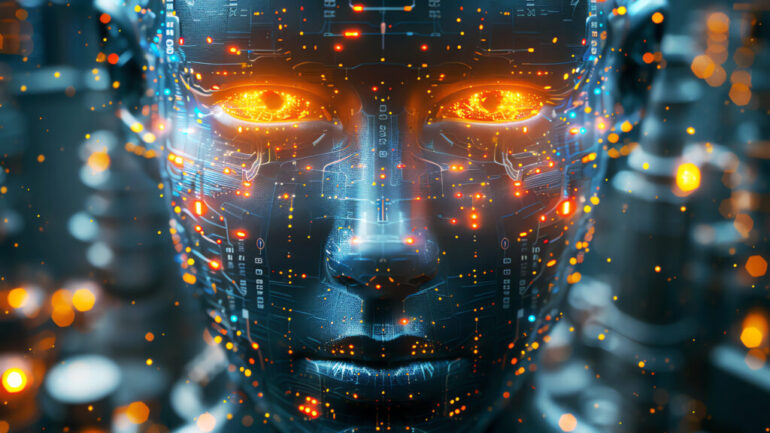The Rise of KANs: Making AI More Understandable

A relatively underexplored concept known as Kolmogorov-Arnold Networks (KANs) is gaining attention as a promising solution to the problems of AI interpretability. Rethinking the architecture of neural networks, KANs offer a way to make AI systems more transparent without sacrificing performance.
As AI models, particularly deep neural networks, grow more complex and capable, their inner workings become increasingly opaque, leaving researchers and users alike grappling with questions of trust and transparency. However, a relatively underexplored concept known as Kolmogorov-Arnold Networks (KANs) is gaining attention as a promising solution to this problem. Rethinking the architecture of neural networks, KANs offer a way to make AI systems more interpretable without sacrificing performance.
The Origins and Fundamentals of KANs
Kolmogorov-Arnold Networks are named after two influential mathematicians, Andrey Kolmogorov and Vladimir Arnold, whose work laid the theoretical foundation for this approach. The origins of KANs can be traced back to the 1950s and 1960s when Kolmogorov and Arnold developed a theorem that any continuous function could be represented as a finite sum of continuous functions of one variable. This groundbreaking result suggested that complex, multi-dimensional functions could be broken down into simpler components, a concept that has significant implications for AI.
The fundamental idea behind KANs is to simplify the architecture of neural networks by removing the fixed activation functions traditionally used in multilayer perceptrons (MLPs) and replacing them with learnable functions that operate outside the neurons. This shift not only reduces the complexity within each neuron but also makes it easier to interpret how the network processes inputs and generates outputs.
In a traditional neural network, neurons are organized into layers, with each neuron receiving inputs from the previous layer. These inputs are multiplied by corresponding weights, summed up, and passed through an activation function to produce an output. The activation function is a non-linear operation that enables the network to model complex relationships between inputs and outputs. However, this non-linearity also makes it difficult to reverse-engineer the network’s decision-making process, leading to the black box problem.
In contrast, KANs undertake a different approach. Instead of embedding the non-linearity within the neurons themselves, KANs place simple, learnable functions outside the neurons. These functions operate on each input individually before the inputs are summed within the neuron. The result is a network that retains the ability to model complex functions while being far more interpretable.
For example, consider a task where a neural network is trained to distinguish between images of cats and dogs. In a traditional MLP, the network would learn to adjust the weights of the inputs to each neuron, with the activation function providing the necessary non-linearity. However, understanding why the network classifies a particular image as a cat or dog would be nearly impossible due to the intricate interactions between neurons.
In a KAN, the network would instead learn simple functions that operate on each input before they are summed within the neuron. These functions are easier to interpret, allowing researchers to reconstruct the mathematical form of the decision-making process. This interpretability is a key advantage of KANs, especially in applications where understanding the rationale behind AI decisions is crucial, such as in healthcare or finance.
KAN Practicality
The potential of KANs extends beyond just improving interpretability. Early research suggests that KANs can achieve higher accuracy than traditional neural networks as they scale. This is particularly true in scientific applications, such as physics, where the underlying functions are well-understood and can be approximated more efficiently using KANs.
For instance, researchers have demonstrated that KANs can be used to solve complex fluid dynamics problems, a task that typically requires significant computational resources. By breaking down the problem into simpler components, KANs can provide accurate solutions more efficiently. Similarly, KANs have shown promise in image recognition tasks, where the ability to interpret the network’s decisions is as important as achieving high accuracy.
Despite these advantages, KANs are not without challenges. One of the primary drawbacks is the increased computational cost associated with training these networks. Because KANs rely on learning multiple simple functions rather than adjusting weights alone, the training process can be more time-consuming and resource-intensive. This limitation has, so far, restricted the use of KANs to smaller datasets and simpler tasks.
However, as AI hardware continues to advance and more efficient training algorithms are developed, these limitations may become less significant. Already, the growing interest in KANs is driving innovation in this area, with researchers exploring ways to optimize the training process and extend the applicability of KANs to more complex, real-world problems.
The Future of AI with KANs
The development of Kolmogorov-Arnold Networks represents a significant step forward in the quest to make AI more transparent and understandable. As AI systems continue to play an increasingly central role in our lives, the ability to interpret their decisions will become ever more critical. Whether it’s ensuring fairness in financial decisions, providing transparency in medical diagnoses, or simply gaining a deeper understanding of the AI systems we rely on, KANs offer a promising pathway toward a more interpretable future.
Moreover, the success of KANs in early applications suggests that they could also improve the performance of AI systems, particularly in domains where the underlying data is well-understood and can be represented using simple functions. As research into KANs continues to evolve, it’s likely that we will see these networks applied to a broader range of tasks, from scientific research to everyday applications.
While it’s still early days for KANs, their potential to make AI both more powerful and more understandable is clear. As the field of AI moves forward, KANs may well play a key role in shaping the future of this transformative technology.


